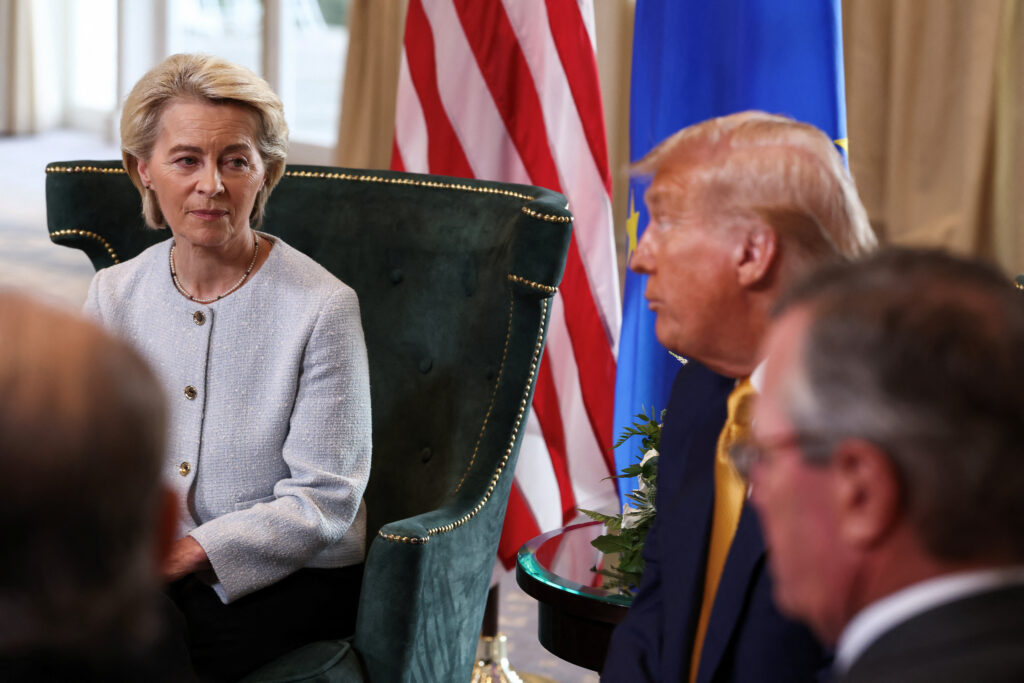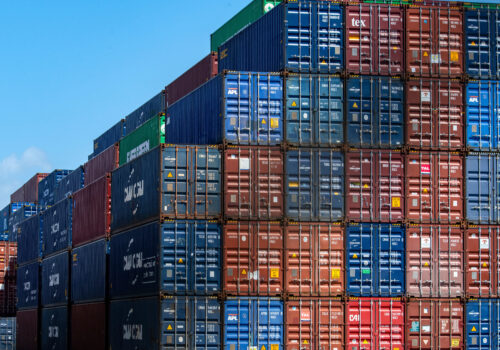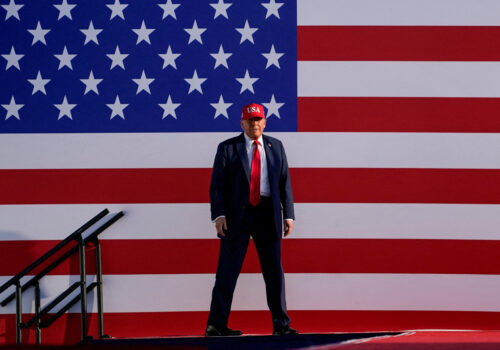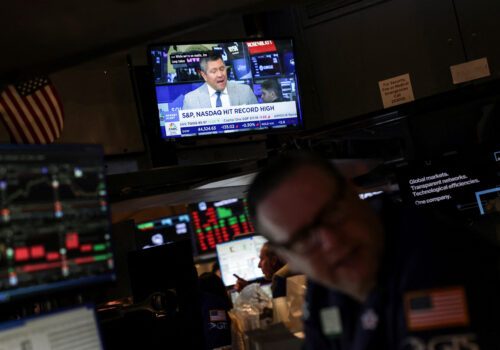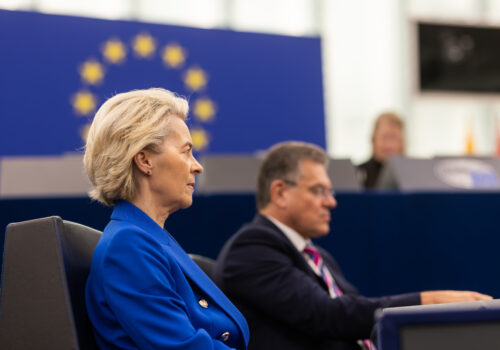JUST IN
“This is the biggest of them all.” That’s how US President Donald Trump described a preliminary trade deal struck on Sunday with European Commission President Ursula von der Leyen. Though details so far are scarce, the United States will impose a 15 percent tariff on most goods from the European Union (EU)—a lower figure than the 30 percent that Trump had threatened earlier, but one that represents a new normal for major US trading partners. In return, Trump said, the EU will purchase hundreds of billions of dollars’ worth of US energy and military equipment, and make additional investments in the United States. Below, Atlantic Council experts on both sides of the Atlantic assess what this means and what to expect next.
TODAY’S EXPERT REACTION BROUGHT TO YOU BY
- Jörn Fleck (@JornFleck): Senior director of the Atlantic Council’s Europe Center and former European Parliament staffer
- Barbara C. Matthews: Nonresident senior fellow at the Atlantic Council’s GeoEconomics Center and former US Treasury attaché to the European Union
- L. Daniel Mullaney: Nonresident senior fellow at the Europe Center and GeoEconomics Center, and former assistant US trade representative
- Erik Brattberg (@ErikBrattberg): Nonresident senior fellow at the Europe Center
The details (so far)
- Jörn tells us that the United States and Europe “seem to have avoided a self-destructive trade war for now in the biggest and deepest commercial and investment relationship the global economy knows.” The preliminary deal, he adds, will allow both sides to “work out further details on sectoral tariffs and non-tariff barriers.”
- The EU deal follows the pattern of other recent agreements, Barbara notes. They typically include new tariffs, purchases of US energy, and increased foreign direct investment (FDI) in the United States.
- Importantly, Barbara adds, these deals usually avoid “regulatory standards and other non-tariff barriers that have stymied bilateral talks between the US and the EU for nearly twenty years.”
Sign up to receive rapid insight in your inbox from Atlantic Council experts on global events as they unfold.
The devils in the details
- Jörn says the details on how the deal treats US-based auto production and EU automotive exports will be worth watching closely, as well as the “opening of European markets” that both Trump and von der Leyen referenced. Those specifics “will be an important indication of whether Trump’s approach has won any EU concessions on non-tariff barriers, or what offensive interests the EU has been able to secure.”
- Dan notes that von der Leyen presented her approach to the meeting in Scotland as “‘rebalancing’ the relationship, specifically referencing trade deficits.” But many Europeans don’t accept that premise, he adds.
- Though the 15 percent US tariff on EU goods is similar to the terms of the United States’ recent deal with Japan, Dan says that it “will be controversial among important constituencies in the EU, which reasonably view the tariffs as contrary to international rules—and do not want to reward what they see as bad behavior.” As a result, von der Leyen may feel pressure for the EU to respond to the US tariffs in kind, which “could throw the deal off the rails between now and August 1,” Dan adds.
- “Many across Europe will be left to wonder,” Jörn says, “whether a much tougher, more escalatory, more front-loaded approach,” similar to how China took on the United States earlier this year, “would have yielded better results.”
The bigger picture
- Barbara envisions deeper Group of Seven (G7) integration, as all the G7 members except Canada have now announced deals with the United States. The European and Japanese pledges to increase FDI in the United States will mean “that more US voters will be employed by companies [from] Japanese and European allies.” More FDI among G7 members “also increases the alignment of economic interests in ways that tariffs could never achieve.”
- Moreover, the EU’s pledge to purchase more US energy—likely including large quantities of liquefied natural gas—can help deliver “stable baseload energy to power data centers and artificial intelligence technologies,” adds Barbara.
- Dan points out that “pharmaceuticals, steel, and maybe semiconductors” appear to have been excluded from this deal—though the two sides already disagree on whether pharmaceuticals are included. That means “discussions on those sectors will continue.”
- As for the EU’s commitment to purchase more than $750 billion worth of US energy and defense equipment, Erik says that it is “legally non-binding and something that many member states would be doing anyway.”
- Stepping back, Erik tells us that the deal is “worth more than just trade.” At a time when the continent continues to depend on the United States for support of NATO and Ukraine’s defense against Russia, it is “an investment in keeping Trump engaged on Europe.”
Further reading
Tue, Jul 8, 2025
April, July, now August: Our expert guide to Trump’s latest tariff moves
New Atlanticist By
“Liberation Day” was nearly ninety days ago, and now the deadline for many nations to negotiate a trade deal and avoid US tariffs is extended to next month. Atlantic Council experts explain what’s behind the moving calendar.
Tue, Jul 15, 2025
Beware the ‘dangerous disconnect’ between Trump and the markets on tariffs
Inflection Points By Frederick Kempe
The US president’s approach to tariffs is about leveraging the United States’ economic power for ends that go beyond trade.
Thu, Jun 26, 2025
To retaliate, or not to retaliate, that is the question for the EU on Trump’s tariffs
New Atlanticist By Frances Burwell
Striking back at US tariffs is unlikely to help the EU achieve its goals of a more stable and open trading partnership with the United States.
Image: European Commission President Ursula von der Leyen and US President Donald Trump, after the announcement of a trade deal between the US and EU, in Turnberry, Scotland, July 27, 2025. REUTERS/Evelyn Hockstein
